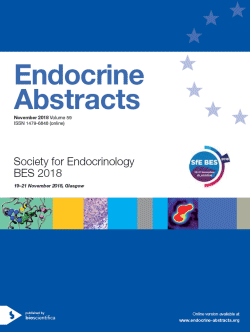Searchable abstracts of presentations at key conferences in endocrinology

Society for Endocrinology BES 2018
Glasgow,
UK
19 Nov 2018 - 21 Nov 2018

The Society for Endocrinology BES will take place 19-21 Nov 2018 in Glasgow. Come and exchange knowledge, share experiences and strengthen collaborations across our global community of endocrinologists.
Symposia
New treatments for bone disorders
ea0059s4.1 | New treatments for bone disorders | SFEBES2018
Abaloparatide Treatment for Osteoporosis
Abaloparatide (ABL), a synthetic PTHrP(134) analogue (75% homology with PTHrP), has high affinity for the RG subtype of the PTH1R and low affinity for the R0 conformation, resulting in a greater stimulus to bone formation vs resorption. In animals, ABL increases bone formation markers with minimal resorption marker increase, increases bone mass, improves microarchitecture and bone strength. In the Phase 3 Abaloparatide Comparator Trial in Vertebral Endpoints s...
ea0059s4.2 | New treatments for bone disorders | SFEBES2018
New treatments for rare bone disease
We are living through an exciting period during which new medical treatments are emerging for a range of rare bone diseases. These include monoclonal antibodies, small molecules and repurposed as well as truly innovative drugs. Whilst underlying the use of them all is an increased understanding of some aspect of bone biology, presently each sits at a different point on the pathway from bench to bedside. Asfotase alfa (bone-targeted alkaline phosphatase) is licensed for the tre...
ea0059s4.3 | New treatments for bone disorders | SFEBES2018
Rare bone disorders: New genes, biology and therapeutic targets
Genetic discoveries in patients and families with rare bone disorders have highlighted the complexity of molecular mechanisms and cellular pathways governing normal bone development and homeostasis. More than 400 different forms of skeletal dysplasia have been described. Most of them result from single-gene defects, involving genes that are of major importance for a particular cellular event in skeletal development. Studies aiming to identify the involved pathways can enable d...



